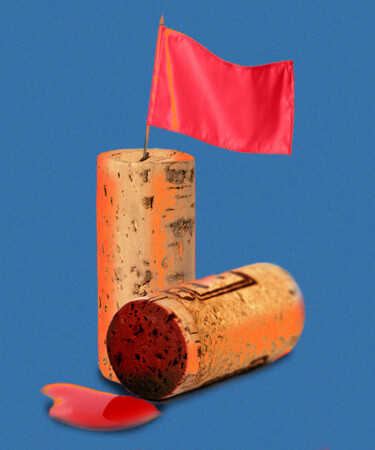After ordering a bottle of wine, there are a few steps that unfold before you actually get to take your first sip. And though it can be fun to buy into the pomp and circumstance of traditional wine service, some things are more necessary for a proper experience while others are relics of the past that could be just fine to skip. For example, if the sommelier at a wine-focused establishment fails to show you a bottle before opening it, that’s a pretty big red flag. Neglecting this step could lead to some costly miscommunications like, say, preemptively opening a $600 bottle of Burgundy when the guest actually meant to order the $60 Beaujolais. But what about the long-standing tradition of presenting the cork itself? VinePair consulted Liz Rogero, the general manager and beverage director of Brooklyn’s Fausto, to get some answers.
Rogero says that showing the cork to the guest isn’t an essential step nowadays, and is actually just a holdover from wine services of previous generations, when businesses may have been less trustworthy.
“Presenting the cork dates back to a time when guests were concerned about fraud — ordering a nice bottle of wine and then receiving something else entirely,” Rogero says. “In a market where guests rely on the restaurant or the wine shop to navigate this esoteric world for them, people inevitably are taken advantage of. Shady businesses could swap out bottles or the wine inside them for a cheaper alternative.” In this case, seeing that the cork had the winery’s name on it or was printed with something along the lines of “estate bottled” signaled to the guest that they were getting exactly what they purchased. In our current dining culture, somms have taken on a bit of a different role in restaurants, and are more focused on guest experience rather than policing for wine fraud.
”When I talk to a table, my goal is to pinpoint which wine will make people the happiest, at a price point where they’re comfortable, and if I can introduce them to something new they love, all the better,” Rogero says.
There’s also the misconception that the cork is needed to detect cork taint, also known as TCA. But you don’t need to smell the cork to tell whether or not the wine is corked at a restaurant. First of all, your somm will often smell and taste a small sample of the wine when they open the bottle so you don’t have to. That somm will also pour the host at the table a small taste to detect whether or not the wine is sound before pouring it for the table — no cork needed.
At Fausto, Rogero works to make diners feel comfortable asking questions about wine, which to her means taking away some of the more stuffy rituals of wine service. “I open the bottle away from the table, taste it for flaws and quality, and don’t present the cork,” she says. “Removing these formalities does require a sense of ethics on my side, but it also makes the wine more accessible.”
